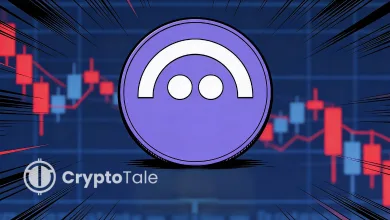Standard Chartered Launches Stablecoin Venture in Hong Kong

- Standard Chartered, Animoca, and HKT seek HK stablecoin license under new regime.
- Limited licenses may give early entrants big sway in HK’s stablecoin market rules.
- Anchorpoint plans to merge Web3, banking, and payments via the HKD-backed stablecoin.
Standard Chartered Bank (Hong Kong) has formed a joint venture with Animoca Brands and HKT to apply for a stablecoin issuer license in Hong Kong, just days after the city’s stablecoin legislation came into effect. The new entity, Anchorpoint Financial Limited, formally expressed interest to the Hong Kong Monetary Authority (HKMA) on August 1, the same day the licensing regime became operational.
This initiative positions the partners to enter a regulated market expected to issue only a limited number of licenses, potentially granting early entrants significant influence in shaping the region’s stablecoin framework and payment infrastructure.
New Regulatory Era for Stablecoins
Hong Kong’s Stablecoins Ordinance mandates that all fiat-referenced stablecoin issuers secure licensing from the HKMA. The framework, effective August 1, connects the city with leading jurisdictions such as the European Union’s Markets in Crypto-Assets Regulation and the United States’ GENIUS Act.
The HKMA confirmed in a media briefing that the first licenses are anticipated early next year. Authorities have positioned the city as a compliant bridge between China’s controlled financial system and global crypto capital flows, offering clear rules for bank and corporate participation in stablecoin issuance.
Anchorpoint’s application builds on the partners’ participation in the HKMA’s Stablecoin Issuer Sandbox, launched in July 2024. This program tested the viability of a Hong Kong dollar-backed stablecoin, which bridges Web3 and traditional financial ecosystems. Standard Chartered contributed its banking and compliance expertise, Animoca provided blockchain growth capabilities, and HKT offered telecom and virtual identity infrastructure.
Strategic Drivers Behind the Move
Standard Chartered’s entry into stablecoin issuance comes as traditional banking margins face increasing pressure in legacy markets. By targeting the regulated digital asset sector, the bank aims to secure revenue from settlement services, foreign exchange, and corporate treasury solutions without exposure to unregulated crypto trading risk.
Animoca Brands’ Group President, Evan Auyang, stated that stablecoins represent one of the most compelling use cases within Web3, and that the firm is still at the early frontier of widespread adoption across institutions and retail alike.
HKT’s involvement strengthens the joint venture’s ability to integrate stablecoin technology into payment and identity systems. Combining a global bank, a blockchain developer, and a telecom provider allows for a comprehensive approach to market penetration and regulatory compliance.
Related: Standard Chartered Sees Ethereum Hitting $4K by 2025
Implications for Hong Kong’s Digital Finance Position
The limited number of licenses expected from the HKMA increases the potential advantage for early recipients. Such positions enable issuers to influence merchant acceptance standards, settlement processes, and cross-border payment corridors.
Participation in the HKMA sandbox demonstrated the trio’s capacity to meet compliance demands while developing interoperability between stablecoins and existing payment systems. This foundation supports Hong Kong’s ambition to serve as a leading international financial center for digital assets.
A key question now arises: Will this early move by Standard Chartered and its partners shape the region’s stablecoin infrastructure before competing issuers can enter the market?
With all regulatory clarity, institutional backing, and entrenched technology integration, Anchorpoint Financial is well-positioned to participate in future developments, including a potential linkage with CBDC initiatives. The location of the joint venture conjures the possibility of a contribution to the movement of monetary digitalization in the Asian region.




